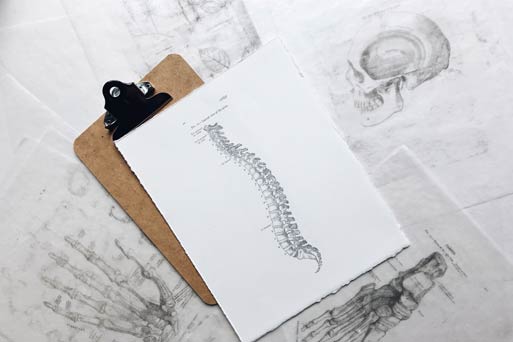Degenerative Disc Disease vs. Degenerative Joint Disease
As we get older, many of us begin to suffer from symptoms that range from minor body aches and pains, to swollen joints, to reduced mobility. And while it’s easy to chalk these things up to simple aging, there are actually two very common conditions that can cause these symptoms. In this article, we’ll take a look at the two conditions – Degenerative Disc Disease (DDD) and Degenerative Joint Disease (DJD). We’ll also take a look at the treatment options available to help manage the symptoms.
Degenerative Disc Disease (DDD)
What are Spinal Discs?
Spinal discs are structures within the spine between each vertebrae that act as shock absorbers to help with flexibility and mobility. These discs also act as ligaments that help to hold the spine together, allowing for smooth movement of the vertebrae. There are twenty three discs within the spinal column, each comprised of two components:
- an outer layer that is very strong called the anulus fibrosus which contains the nerves of the discs
- an inner viscous substance called the nucleus pulposus which contains different proteins
What is Degenerative Disc Disease?
Degenerative Disc Disease is a condition where the spinal discs begin to wear down. Over time, they can become reduced in size and lose lubrication, resulting in a variety of conditions such as disc herniation, spinal stenosis, and arthritis.
What Causes Degenerative Disc Disease?
There are several conditions or injuries that can lead to Degenerative Disc Disease. Along with the process of aging, conditions such as osteoporosis (a condition where the bones become brittle) and arthritis are very common contributors to Degenerative Disc Disease.
What are the Symptoms?
Typically, patients who suffer from Degenerative Disc Disease will experience significant lower back pain that can radiate down the body through the buttocks and legs (sciatica). The condition can also cause neck pain, but most patients will initially report back pain as their first symptom.
Early Onset Symptoms
Patients almost always report that pain begins in the lower back and worsens during things like sitting, bending, twisting and lifting, with marginal reduction in pain once the patient rises to a standing position. Another common symptoms is pain when lying down, with moderate improvement occurring when the supine position is changed.
Ongoing Symptoms
As the condition progresses, patients report things like numbness, tingling and weakness. Depending on which disc(s) are affected, patients may experience referred pain in the arms and legs, neck, feet and hands. These symptoms can come and go randomly, and may occur for extended periods of time, go away for a period of time, then return.
Degenerative Joint Disease (DJD)
What is Degenerative Joint Disease?
Degenerative Joint Disease is most commonly know as Osteoarthritis. Similar to Degenerative Disc Disease, with Degenerative Joint Disease, the ‘cushion’ of cartilage between the joints beings to deteriorate. The joints most commonly affected by DJD are the knees, followed by the hips, hands and spine.
What Causes Degenerative Joint Disease?
Generally, the condition occurs as we age. Like the spinal discs, the cartilage that supports and cushions the joints begins to wear down, leading to rougher movement of the joints. At a certain point when this cartilage is almost completely destructed, patients will begin to feel the effects of what we call ‘bone on bone’ – the grinding of the bones on each other that occurs when the cushioning is gone.
What are the Symptoms?
Early Onset Symptoms
Initially, patients may experience mild to moderate pain, stiffness and swelling in the joint that comes and goes. At this stage, the use of ice, heat and anti-inflammatory medications combined with resting of the joint can reduce the symptoms for a period of time.
Ongoing Symptoms
Without intervention, the cartilage will continue to wear down leading to almost constant pain in the area of the joint. Along with pain, the patient will experience a rough grinding sensation with accompanying swelling that may not go away. They will also begin to experience weakness in the joint, and reduced mobility.
Treatment Options for Both Conditions
While there are no cures for either of these conditions, a variety of treatment options are available to address the symptoms of each condition. These options range from the use of oral pain medications such as pain killers and anti-inflammatories, topical medications, and joint injections with steroids and gels like Synvisc. Some patients may even opt to have joint replacement surgery depending on the severity of their symptoms and the level of disc or joint deterioration.
At Broadway AT Yew Chiropractic & Massage, we offer a more natural approach to treating the symptoms of DDD and DJD. Our main goal is to help reduce the inflammation that causes symptoms in our patients. Once we have achieved a reduction in inflammation, we’ll progress to treatments that focus on improving mobility within the joints and muscles. ART, Graston and massage are all incredibly effective treatments, and they’re much safer than traditional treatment methods.
Along with your Vancouver Chiropractic treatments, our practitioners will work with you to improve external factors that tend to exacerbate the symptoms of both Degenerative Disc Disease and Degenerative Joint Disease. These factors include things like ergonomics in the home and workplace, and gently daily stretching and exercises that you can do at home to keep your muscles limber.
If you suffer from either of these conditions and would like to take a safe, effective and natural approach to treating your symptoms, give us a call at Broadway AT Yew Chiropractic & Massage in Kitsilano Vancouver to discuss your options. Learn more about our Vancouver Chiropractors.


